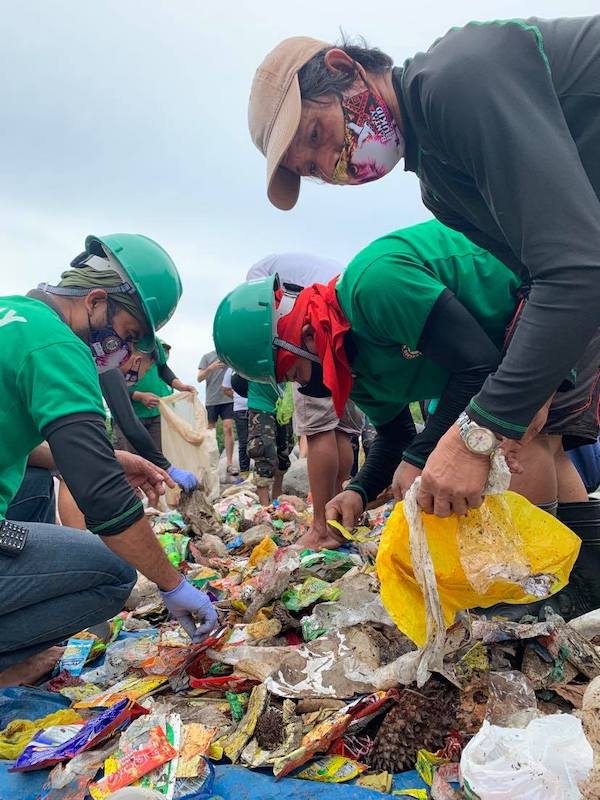 Volunteers pick up waste during a river clean-up and brand audit at the Panigan-Tamugan Watershed in Baguio District, Davao City on September 26, 2020. (Photo courtesy of Interfacing Development Interventions for Sustainability)
Volunteers pick up waste during a river clean-up and brand audit at the Panigan-Tamugan Watershed in Baguio District, Davao City on September 26, 2020. (Photo courtesy of Interfacing Development Interventions for Sustainability)
DAVAO CITY (MindaNews / 20 January) – The donation made in 2018 by the Japanese government worth ¥5.013 billion or P2.052 billion for the construction of a waste-to-energy project (WTE) in Barangay Biao Escuela here is still available, a city councilor said.
First District Councilor Temujin “Tek” Ocampo said in an interview that the local government is awaiting the approval of the National Economic Development Authority (NEDA) for the project, which requires a counterpart fund of at least P3.486 billion from the national government in addition to the donation offered by the Japan International Cooperation Agency (JICA).
In a resolution passed in August 2022, the city council said it hopes to take advantage of the grant opportunity “as a result of the strong relationship of the Philippines with Japan.”
Ocampo said he is hoping that NEDA will approve the WTE project within the year.
He believed the project “would push through” despite the strong opposition from different environmental advocates in the city.
“I will support the completion of the project because we are already in the implementation stage. The 19th Council approved the project. We are only waiting for updates from NEDA for the budget requirements,” he said.
Ocampo said that representatives from the Department of Environment and Natural Resources and the Department of Energy expressed support for the proposed project when they visited the city in December 2022.
He said the WTE would generate a capacity of 11 MW. Of this total, 30% will be utilized to run the facility.
Various groups are wary of the establishment of WTE facility due to its potential hazards to the health of the local residents and to Davao’s rich biodiversity, particularly the watersheds.
Environmental advocates pointed out that the wastes generated in the city are 50-percent organic waste, which cannot be utilized to fuel a WTE technology.
The city generates around 600 to 700 tons of waste daily, according to the City Environment and Natural Resources Office.
Ocampo noted that segregation will still be practiced even after the WTE project is established.
He also allayed fears that the project would have detrimental effects on the health of the public and the environment.
Ocampo claimed that studies from countries utilizing the technology have shown that those facilities “neither pose health risks nor threaten the environment.”
The local government plans to build the WTE facility in a 10-hectare property in Biao Escuela, Tugbok District.
Atty. Mark Peñalver, executive director of Interfacing Development Interventions for Sustainability (IDIS), said that a WTE facility is a “dangerous way” of generating power as it is not a renewable energy source and produces more greenhouse gasses than coal.
He said the incinerator, which emits highly toxic and carcinogenic substance, will affect residents of 20 barangays in the city.
He said those barangays include Mintal, Santo Niño, Catalunan Grande, Langub, Waan, Callawa, Riverside, Balengaeng, Tacunan, Biao Guianga, Angalan, Los Amigos, Talandang, New Valencia, New Carmen, Matina Biao, Tagakpan, Ula, Tugbok, and Biao Escuela.
The project site of the proposed WTE facility is located 2.2 kilometers away from the Biao Escuela Elementary School, and 550 meters from the relocation site of displaced families in Catalunan Grande, Peñalver said. (Antonio L. Colina IV / MindaNews)
